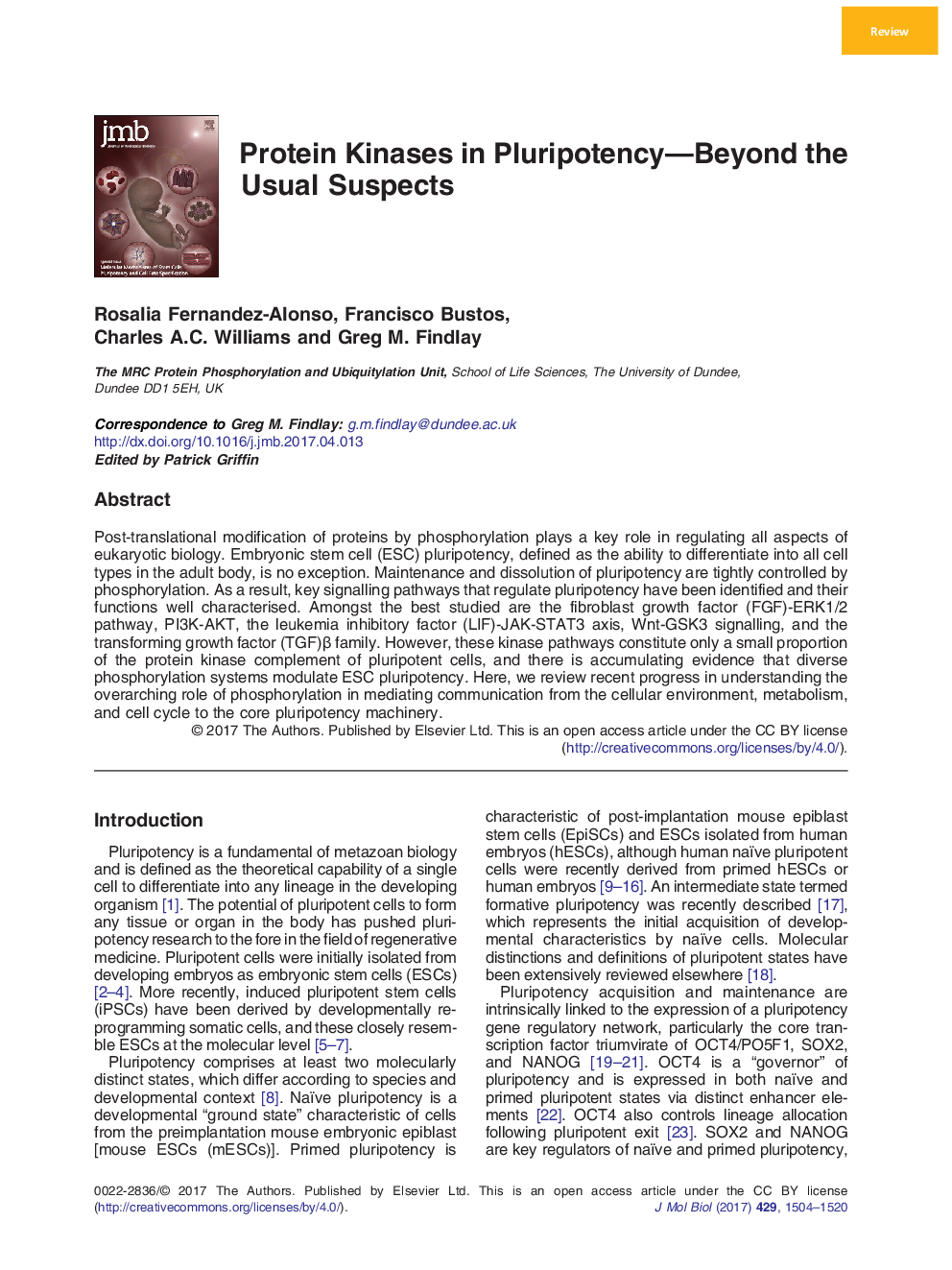| Article ID | Journal | Published Year | Pages | File Type |
|---|---|---|---|---|
| 5533325 | Journal of Molecular Biology | 2017 | 17 Pages |
â¢Pluripotency is a unique characteristic of ESCs and induced pluripotent stem cells and is tightly controlled by phosphorylation networks.â¢High-throughput technologies are being used to elucidate new pluripotency signalling pathways.â¢Environmental, metabolic, structural, and stress-regulated phosphorylation networks are emerging as novel regulators of pluripotency.
Post-translational modification of proteins by phosphorylation plays a key role in regulating all aspects of eukaryotic biology. Embryonic stem cell (ESC) pluripotency, defined as the ability to differentiate into all cell types in the adult body, is no exception. Maintenance and dissolution of pluripotency are tightly controlled by phosphorylation. As a result, key signalling pathways that regulate pluripotency have been identified and their functions well characterised. Amongst the best studied are the fibroblast growth factor (FGF)-ERK1/2 pathway, PI3K-AKT, the leukemia inhibitory factor (LIF)-JAK-STAT3 axis, Wnt-GSK3 signalling, and the transforming growth factor (TGF)β family. However, these kinase pathways constitute only a small proportion of the protein kinase complement of pluripotent cells, and there is accumulating evidence that diverse phosphorylation systems modulate ESC pluripotency. Here, we review recent progress in understanding the overarching role of phosphorylation in mediating communication from the cellular environment, metabolism, and cell cycle to the core pluripotency machinery.
Graphical AbstractDownload high-res image (90KB)Download full-size image
